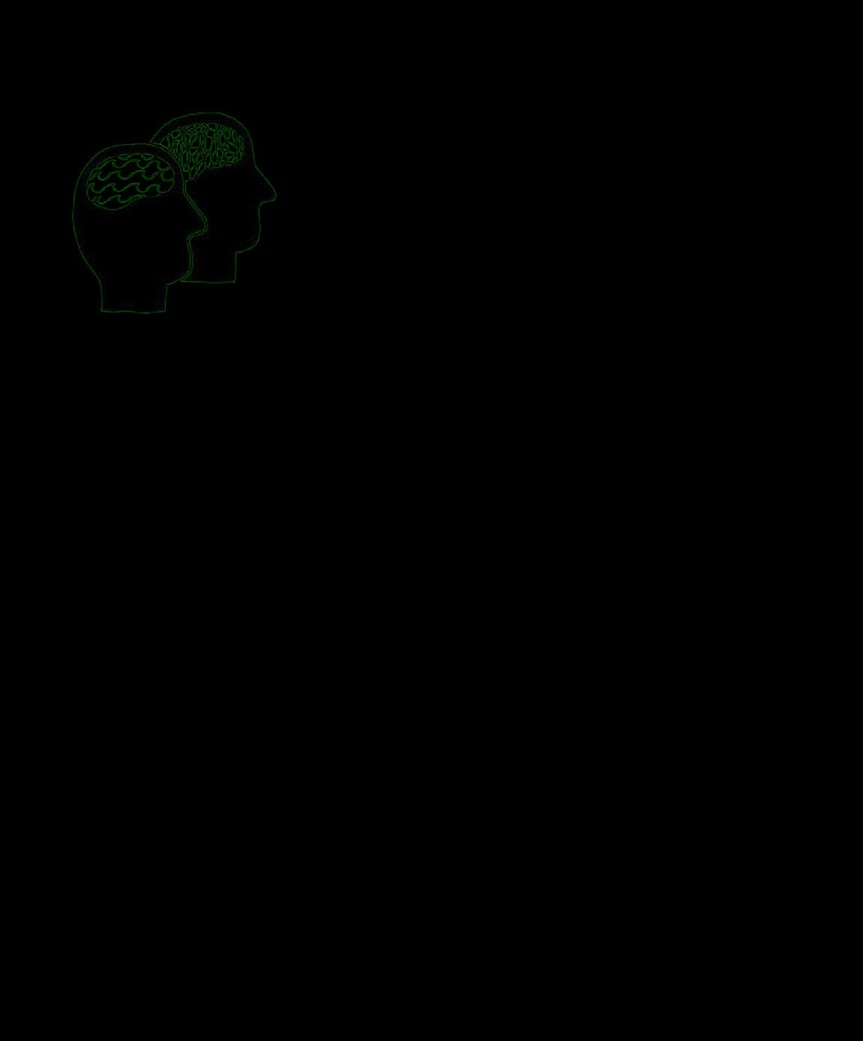The Psychology Book (99 page)
Read The Psychology Book Online
Authors: Unknown

of psychological innocence, although
Gordon Willard Allport was
born in Montezuma, Indiana
he maintained his belief that traits
in 1897. The youngest of four
are a reasonable starting point for
to explore positive human experience
sons, Allport was shy and
the description of personality.
are based “largely upon the behavior
studious as a child, but as a
of sick and anxious people or upon
teenager he became editor of
Allport’s influence
the antics of captive and desperate
his school newspaper and ran
Allport’s work forms the basis of
rats.” He wondered why there were
his own printing business.
many contemporary schools of
no theories based on the study of
During World War I, Allport
thought, though he is rarely credited
healthy human beings, and those
performed military duties,
directly. Much of modern personality
who strive to make life worth
before winning a scholarship
testing derives from the work of
living. He pointed out that most
to Harvard University to study
Raymond Cattell and Hans Eysenck,
studies are of criminals, not of
philosophy and economics.
and both of these psychologists
law abiders; of fear, not courage;
After graduating in 1919, he
drew upon Allport’s lexical study.
and focus on the blindness of
taught for a year in Turkey,
Cattell’s “16 Personality Factor
humans, rather than their vision.
then went back to Harvard,
Questionnaire,” which is still used
The burgeoning school of positive
where he gained his doctorate
in psychology in 1922. He also
by psychologists today, uses 16
psychology, led by Martin
studied with the Gestalt School
traits identified by Cattell through
Seligman, has taken up this idea
in Germany, and at Cambridge
computer analysis of Allport and
and aims to develop a scientific
University in England.
Odbert’s original 4,500 adjectives.
psychology of positive experience.
In 1924, Allport again
Humanistic psychology, which
By 1955, when Allport wrote
returned to Harvard to teach
forms the basis of most counseling
Becoming
, his thinking had
the first course in personality
and therapeutic practices, also
developed further; he now saw
studies in the US. Apart from
relies heavily upon Allport’s ideas,
human striving toward a higher level
four years at Darmouth College,
particularly his idiographic method
of consciousness and realization as
he remained at Harvard until
and insistence upon the uniqueness
the true motive of personality. The
his death from lung cancer,
of each and every person. Increased
idea that “becoming” is the ultimate
aged 70, in 1967.
focus on the practitioner–client
goal of human beings was also
relationship as a vehicle for the
developed by the psychologists
Key works
expression and development of
Carl Rogers and then Abraham
1937
Personality: A
personality has its roots in Allport’s
Maslow, who renamed it “self-
Psychological Interpretation
assertion that personality is largely
actualization.” Although Allport’s
1954
The Nature of Prejudice
a function of relationships.
work is cited less often than other
1955
Becoming
Allport was also one of the
well-known figures, he had a
1961
Pattern and Growth in
first to point out that even those
profound and lasting influence
Personality
psychological theories that attempt
on the field of psychology. ■

314
GENERAL INTELLIGENCE
CONSISTS OF BOTH
FLUID AND CRYSTALLIZED
INTELLIGENCE
RAYMOND CATTELL (1905–1998)
IN CONTEXT
APPROACH
R
aymond Cattell, considered made up “g”: fluid and crystallized
to be one of the dozen most
intelligence. Fluid intelligence is
eminent psychologists of
a series of thinking or reasoning
the 20th century, contributed hugely
abilities that can be applied to
Intelligence theory
to the study of human intelligence,
any issue or “content.” Sometimes
BEFORE
motivation, and personality. His
described as the intelligence we
interest in intelligence was sparked
use when we don’t already know
1900s
Alfred Binet claims
early in his career when he was a
how to do something, it comes into
intelligence can be measured,
student of Charles Spearman, the
play automatically in processes
and introduces the term
British psychologist who defined
such as problem-solving and
“intelligence quotient” (IQ).
“g”—a single-factor, general
pattern recognition, and it is
1904
Charles Spearman
intelligence that serves as the
thought to be closely related to
identifies “g” as an underlying
foundation for all learning.
working memory capacity.
property of intelligence.
In 1941, Cattell developed this
Cattell suggests fluid intelligence
concept further, defining two
is genetically inherited, which may
1931
In
The Measurement of
different types of intelligence that
account for individual differences.
Intelligence,
Edward Thorndike
says that there are three or four
main types of intelligence.
General underlying intelligence (g)
AFTER
is made up of two parts.
1950
J.P. Guilford claims that
there are around 150 different
types of intellectual ability.
1989
US psychologist John
B. Carroll proposes a three-
stratum psychometric model
Fluid intelligence
, which
Crystallized intelligence
,
of intelligence, consisting
is the ability to think and
which builds from past
of narrow abilities, broad
reason abstractly, and to
experiences and learnt
abilities, and Charles
perceive relationships
facts, and amounts to
between things without
judgement skills that
Spearman’s “g” factor.
prior practice or instruction.
accumulate as we age.

PSYCHOLOGY OF DIFFERENCE 315
See also:
Alfred Binet 50–53 ■ J.P. Guilford 304–05 ■ Hans Eysenck 316–21 ■ William Stern 334 ■ David Wechsler 336
It builds to a peak in young
The culture-fair intelligence
adulthood, then steadily declines,
test
was developed by Cattell
perhaps because of age-related
in the 1920s. It measures fluid
intelligence through pattern-
changes in the brain. Brain injury
related problems that require
can affect fluid intelligence, which
reasoning ability but no prior
suggests it is largely physiological.
learning or knowledge to solve.
Crystallized intelligence
As we use fluid intelligence for
solving problems, we begin to
develop stores of knowledge and
A
B
C
D
working hypotheses about the
world around us. This store of
knowledge is our crystallized
E
F
G
H
intelligence, described by Cattell
as “the set of judgmental skills”
gained from investing fluid
intelligence in cultural activities.
Vast differences in learning
of intelligence increases gradually
Noting that standard IQ tests
experiences occur because of
over a lifetime and stays relatively
tend to assess a combination of
factors such as social class, age,
stable until we are around 65 years
fluid and crystallized intelligence,
nationality, and historical era.
old, when it begins to decline.
Cattell developed tests to assess
Crystallized intelligence
Cattell sees fluid and crystallized
fluid intelligence in isolation. His
includes skills such as verbal
intelligence as fairly independent
culture-fair intelligence test, which
comprehension and numerical
of each other, but reasons that
uses nonverbal, multiple-choice
facility, because these abilities rely
having a higher fluid intelligence
questions based on shapes and
on knowledge already gained—
might lead to the broader and
patterns, requires no prior learning
such as the rules of grammar or
faster development of crystallized
from the participants and can be
addition, subtraction, and other
intelligence, depending on factors
used to test children and adults
mathematical concepts. This form
relating to personality and interests.
from any culture. ■
Raymond Cattell
Born in Staffordshire, England,
life there. In 1997, the American
Raymond Bernard Cattell achieved
Psychological Association
a first-class degree in chemistry in
honored him with a Lifetime
1924 before turning to psychology
Achievement Award. However,
and receiving his doctorate in
his idea that nations should
1929. After teaching in London
safeguard high, inherited
and Exeter universities, he ran
intelligence through eugenics
the Leicester Child Guidance
made this a controversial award,
Clinic for five years before moving
and led to critical attacks.
to the US in 1937. He lived and
Cattell defended himself and
taught there until 1973, holding
refused the award, but died of
posts at Clark and Harvard
heart failure the following year.
universities, and the University
of Illinois. Cattell married three
Key works
times and moved to Honolulu as
a professor at the University of
1971
Abilities
Hawaii, spending the rest of his
1987
Intelligence
